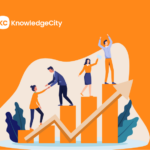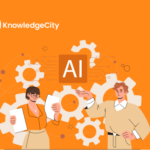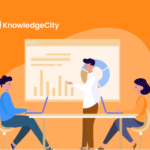Gamification in the Workplace: Why It’s Trending and How HR Can Use It to Recruit and Boost Employee Engagement
As a human resources manager, you are no doubt aware of the importance of employee engagement. When employees are engaged, they are more motivated, more productive, and more likely to stay with your company long-term.
But finding new and innovative ways to boost engagement can be challenging, especially when you’re working within the constraints of a busy HR department. That’s why gamification has become such a popular tool in recent years.
What Is Gamification in Business?
Gamification is the process of incorporating game-like elements into non-game contexts to increase engagement and motivation. It’s a concept that has been used with great success in marketing and education, and it’s now being applied to the workplace for customer engagement to employee training and development. In this article, we’ll explore the potential of gamification at work and examine examples of how it’s being used to boost employee engagement.
The benefits of a gamification in the workplace are numerous and well-documented. It can increase user engagement, drive better outcomes, and foster a more positive corporate culture. So, how can businesses harness the power of gamification to drive their success?
According to the HR Trend Institute:
“Human drivers like purpose, autonomy, mastery, and relatedness are the design principles for work in this age. Extrinsic motivation is not the only mechanism anymore; it can still play a role. One area of business where gamification techniques are increasingly applied in Human Resources.
If you’re ready to adopt HR gamification mechanisms in your organization, it will undoubtedly help make the work of the employees a whole lot more enjoyable, creative, and efficient.”
Examples of Gamification in the Workplace
Two key areas where gamification can be applied are marketing and customer engagement. Businesses can increase customer engagement and loyalty by incorporating game mechanics into marketing campaigns and customer interactions.
For example, companies can use gamification to incentivize customers to take specific actions, such as purchasing or leaving a review. This can help to drive sales, improve customer satisfaction, and build brand awareness.
According to LXA Hub, “89% of employees would feel more engaged in the workplace if there were gamified activities, and 96% of employees enjoy gaming elements in their tasks. Employee happiness can be increased by 89% with a gamified workplace. Recent studies have shown that employees experience a 48% increase in engagement with gamification.”
Another area where gamification can be applied is in employee training and development. By incorporating game elements into training programs, businesses can make learning more effective. A workplace that embraces gamification can help employees retain information better, as well as increase motivation.
For example, companies can use gamification to create interactive training programs or to incentivize employees to complete training modules.
Gamification is used to improve employee performance and motivation. By incorporating game elements into work tasks, businesses can increase employee inspiration and productivity.
For example, companies can use gamification to incentivize employees to meet specific performance goals or to encourage collaboration and teamwork.
According to SHRM, “gamification has a marked impact on training effectiveness, too, with 83 percent of those who had received gamified training saying it made them feel motivated, compared with only 61 percent who felt the same way after receiving non-gamified training.”
Finally, gamification can be used to foster a more positive corporate culture. It can create a more enjoyable and engaging work environment. This can boost employee satisfaction, reduce turnover, and improve employee morale.
According to HR Cloud, “when Ford Motors Company launched a game that trained the staff about new vehicle models, configurations, and financial details, they saw a 417% increase in learning engagement. That’s a brilliant example of effortless gamification at work that improves the adoption of the company’s policy.”
Gamification at work can be a powerful tool to drive engagement, motivation, and productivity. Whether you want to improve customer engagement, employee performance, or corporate culture, gamification is a proven and effective strategy to help you achieve your goals.
Why It’s Trending
Gamification is trending for several reasons, including:
Increased engagement and motivation: Gamification makes tasks and activities more enjoyable and rewarding. This can lead to improved performance and higher productivity.
Improved learning outcomes: Gamification can use elements such as challenges, rewards, and feedback, to motivate learners.
Better customer experiences: Gamification can improve the interactivity of products and services to increase customer loyalty and satisfaction.
Increased adoption of technology: Gamification is now more accessible and widespread thanks to updated tech. It can now be easily incorporated into products, services, and internal processes.
Changing employee expectations: Younger generations like millennials and Gen Z have different workplace expectations than previous generations. They value work-life balance and enjoyment, and gamification can help support these values.
Gamification provides a fun way to motivate employees, improve learning outcomes, increase customer engagement, and meet the changing expectations of workers.
Seven Gamification in the Workplace Ideas to Try
One of the benefits of gamification is that it can be applied to many different aspects of work, from recruitment to employee training and development. Here are a few ideas for how gamification can be used in the workplace:
Employee recognition and motivation: Companies can use gamification to motivate employees by rewarding them for meeting specific goals or milestones. For example, a company might use a points system to track employee achievements, with employees redeeming points for rewards such as extra time off, gift cards, or other prizes.
Employee training and development: Using gamification to make learning more interactive and engaging can help employees retain information better and become more confident in their abilities. For example, a company might use gamified e-learning modules to teach employees new skills.
Project management: Gamification can make project management more engaging and efficient. For example, a company might use gamified tools to track the progress of a project and reward employees for meeting deadlines and achieving project goals.
Sales and marketing: Gamification can increase sales and marketing efforts by incentivizing customers to take specific actions, such as making a purchase or referring friends. For example, a company might offer customers points or rewards for purchasing or sharing a product or service with their friends.
Customer engagement: Companies can use gamification to increase customer engagement by offering them games and other interactive experiences. For example, a company might provide a mobile app with gamified features like quizzes, challenges, or rewards to engage and motivate customers.
Recruitment: Gamification can be used to make the hiring process more engaging for job candidates. For example, a gamified assessment could be used to measure candidates’ skills and suitability for the role.
Employee wellness programs: Encouraging healthy habits, such as exercise or healthy eating, through gamification can help employees maintain a better work-life balance and improve overall well-being. This could be done by awarding badges or implementing a system of leveling up to earn new titles.
By incorporating these examples of gamification in the workplace, companies can increase employee engagement, motivation, and productivity while improving the overall work environment.
Real-World Examples of Gamification in the Workplace
Let’s look at some specific examples of companies successfully utilizing gamification:
Starbucks’ “My Starbucks Rewards” Program: This program allows customers to earn points for purchases, which can be redeemed for rewards. It’s a simple but effective way to increase customer loyalty and engagement.
Duolingo’s Language Learning App: This app uses gamification to make language learning fun and engaging. Users can earn points and unlock new levels as they progress through the course.
The PwC Game: This game, developed by “Big Four” accounting firm PwC, is used to assess candidates’ skills and suitability for specific roles. It’s a fun and interactive way to evaluate candidates that provide a more accurate picture of their abilities than a traditional resume or interview.
The “Step Up” Program: This program, developed by Fitbit, allows employees to earn rewards for reaching certain exercise milestones. It’s a fun way to encourage employees to maintain a healthy lifestyle and improve overall well-being.
The “Catch-Up Challenge”: This program, developed by the HR department at a tech company, encourages employees to attend company events and connect with their colleagues. Employees earn points for attending events and meeting new people, which can motivate them to excel.
How to Get Started with Gamification
The following tips can help you implement gamification at work and successfully boost employee engagement.
Start small: Before implementing gamification on a large scale, start with small pilots to test the effectiveness of gamification in different HR processes. This will help you understand what works and refine your approach accordingly.
Make it relevant: Ensure the games you create are relevant to the HR process you’re trying to improve. For example, if you’re trying to improve employee engagement, design games focused on employee recognition and motivation.
Provide clear objectives: Provide clear and attainable goals for the games you create. This will help employees understand what they need to do to win and what they stand to gain from participating.
Track results: Regularly measure the results of your gamification efforts to determine their effectiveness. This will help you see places to improve or expand your efforts.
Engage employees: Encourage employees to participate in gamification efforts by making the games fun and easy to play. Overly complicated initiatives may cause the employees to see the game as another hurdle to overcome.
Make it personal: Make gamification customizable by allowing employees to choose rewards or games based on their preferences. An example of this would be to offer gift card rewards from a variety of establishments.
Make it a team effort: Encourage teamwork by creating games requiring employee collaboration. This will help foster a positive and supportive work environment and improve employee satisfaction.
Keep it fresh: Regularly update the games you create to maintain their interest and enthusiasm for the games over time. Studies have shown that “83% of those who receive gamified training feel motivated, while 61% of those who receive non-gamified training feel bored and unproductive.”
By following these tips, you can effectively use gamification to improve HR processes, increase employee engagement and motivation, and achieve your HR goals.
Tips for Using Gamification in Recruitment
Gamification can also improve the recruitment and hiring process. Companies can use games to test candidates’ problem-solving, teamwork, and communication skills. This can provide valuable insights and help the company make more informed hiring decisions.
Here are some tips to use effective gamification in your recruitment process.
Make it fun: Incorporate fun elements into the recruitment process to motivate candidates. For example, you could use quizzes, puzzles, or other interactive features to assess candidates.
Provide instant feedback: Provide candidates with instant feedback on their performance to help them understand their strengths and weaknesses and provide motivation to improve.
Leverage technology: Take advantage of available tech to create a unique and exciting recruitment experience. One example would be to use virtual or augmented reality.
Reward candidates: This should be done regardless of whether they are selected for the job. This will help to create a positive experience and increase the chances of a candidate speaking well about your company or applying to another job in the future.
By following these tips, you can effectively use gamification in recruitment to motivate candidates, attract top talent, and improve your overall recruitment process.
Conclusion
Incorporating game design elements into HR processes and initiatives can help HR managers increase employee engagement, motivation, and satisfaction. Gamification can also help HR managers to develop and improve employee skills, measure performance, and drive desired behaviors and results.
Gamification can create a more enjoyable and dynamic work environment, leading to better employee morale, retention, and performance. By embracing gamification, HR managers can tap into the power of play to drive positive change and enhance the overall effectiveness of their HR strategies.
To further equip your organization for success, download our free guide to Building a Sustainable HR Strategy today!
Subscribe to Our Newsletter
Join 80,000+ Fellow HR Professionals. Get expert recruiting and training tips straight
to your inbox, and become a better HR manager.


 KnowledgeCity
KnowledgeCity 











